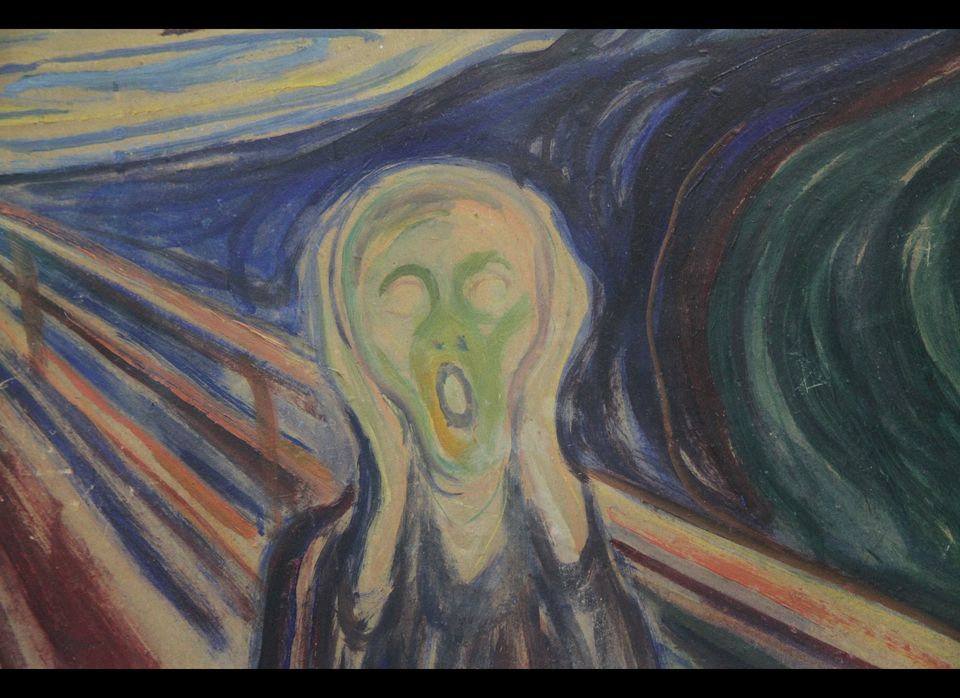Edvard Munch could have used the cash.
Although the Norwegian artist’s most famous painting just sold for $120 million at a Sotheby’s auction in New York, there was a time when the Norwegian artist was so poor he had to borrow money from friends to pay for his rented room.
“He made very little money from paintings,” explains Petra Pettersen, Curator of Paintings at the Munch Museum in Oslo, Norway. “In the beginning, he made his money from lithographs, printed from etched stones that he rented from the printer. He could not pay for the stones, so he held on to them, storing them in a hotel room—but then he couldn’t pay for the room either, so he was in real trouble.”
SCROLL DOWN FOR PHOTOS
The Munch Museum now holds over 200 of these original white lithographic stones—works of art by themselves—bought up from collectors, print shops and other artists. So far, none of the stones have ever been displayed.
“We always buy the stones when we find them,” says Petra. “. . . and we learn more about the artist each time.” The lithographs for two of Munch’s most famous paintings, The Scream and Madonna are actually carved on either sides of the same stone.
There exist four originals work of “The Scream”: two pastels and two actual paintings. The first pastel was the copy sold at auction, the other is on display at the Munch Museum. One painting is displayed at Norway’s National Gallery in Oslo, and the last painting (of untold value) is locked away deeply within the hidden chambers of the Munch Museum.
Not revealing any secrets, the non-public oil-painted version of the The Scream is kept locked in a vault so secure, I lost count of the number of elevators, electronically-coded doors and retinal scans that we passed through in order to arrive in the climate-controlled tomb where lies what may be the most iconic painting on earth, crated in a glass box.
“It’s actually impossible to steal this painting now,” Petra alludes to new security technology. The museum’s pastel version (on display) was stolen in 2004, but recovered some two years later when the thieves failed to find a willing buyer. In short, the painting is too famous.
Aside from producing one of the most parodied paintings on the planet, Munch created over 40,000 works, two-thirds of which are owned by the Munch Museum.
“Our collection is worth more than the entire reserves of the Bank of Norway,” admits museum director Stein Olav Henrichsen, which is another way of saying that the collective artworks are literally priceless.
Although he never saw the kind of money his paintings earn today, Edvard Munch knew their value. “Once Munch became wealthy, he kept his paintings,” muses Petra. “He did not want to sell them -- he always wanted to be near his own art.”
Cross-posted from National Geographic's Digital Nomad. You can follow Andrew Evans on Twitter or read more travel dispatches here.

